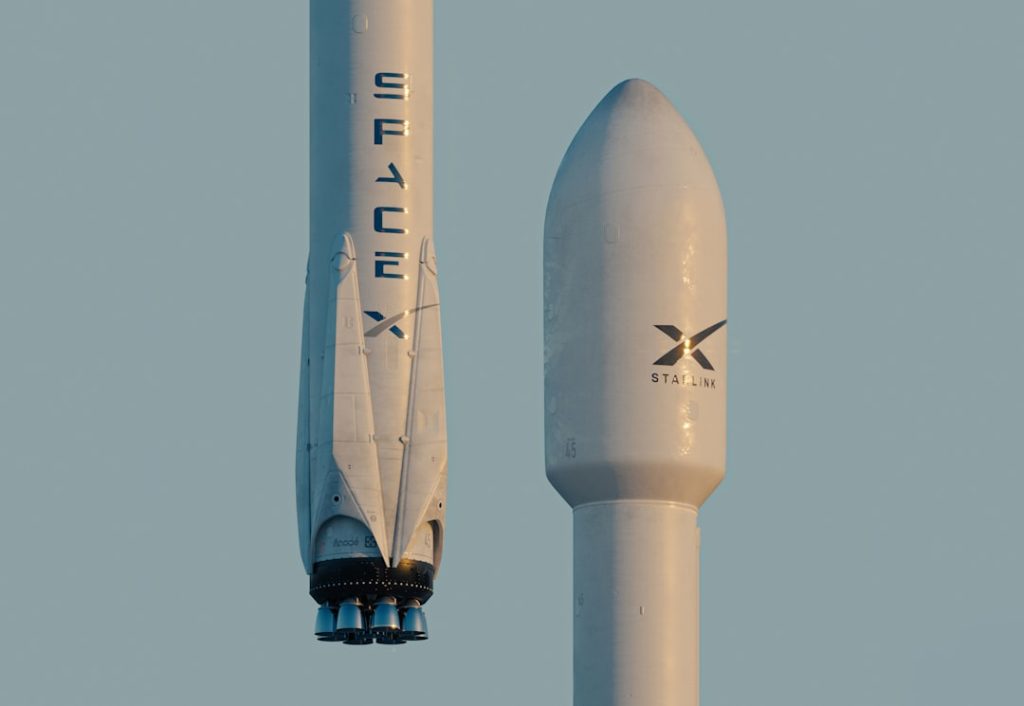SpaceX, founded by Elon Musk in 2002, was born from a vision that transcends mere commercial interests; it aims to revolutionize space exploration and make humanity a multi-planetary species. Musk’s ambition is rooted in the belief that life on Earth is fragile and that establishing a human presence on other celestial bodies is essential for the survival of our species. This vision is not just about reaching Mars or the Moon; it encompasses a broader goal of making space travel accessible and sustainable for future generations.
Musk envisions a future where millions of people can live and work on other planets, fundamentally altering the trajectory of human civilization. The company’s mission statement reflects this grand vision: to enable humans to live on other planets. This is not merely a lofty ideal; it is a call to action that has inspired a new generation of engineers, scientists, and dreamers.
SpaceX’s approach combines cutting-edge technology with an entrepreneurial spirit, challenging the status quo of traditional aerospace industries. By reducing the cost of space travel and increasing the frequency of launches, SpaceX aims to democratize access to space, allowing not just governments but also private entities and individuals to participate in the exploration of the cosmos.
Key Takeaways
- SpaceX aims to revolutionize space exploration by making it more affordable and accessible.
- From its humble beginnings, SpaceX has grown to become a dominant force in the global space industry.
- The company has made significant advancements in rocket technology, including reusable rockets and the development of the Starship.
- SpaceX has achieved major milestones in space travel, such as launching the first privately funded spacecraft to the International Space Station.
- With ambitious plans for Mars colonization, SpaceX is poised to shape the future of space exploration.
The Evolution of SpaceX: From Humble Beginnings to Global Dominance
SpaceX’s journey began in a modest office in El Segundo, California, where Musk and a small team of engineers set out to design a rocket that could be both reliable and affordable. The early years were fraught with challenges, including technical failures and financial struggles. The first rocket, Falcon 1, faced multiple launch failures before finally achieving success in 2008.
This pivotal moment marked the beginning of SpaceX’s ascent in the aerospace industry. The successful launch not only validated Musk’s vision but also attracted significant attention and investment, paving the way for future developments. As SpaceX continued to innovate, it quickly evolved from a startup into a formidable player in the global aerospace sector.
The introduction of the Falcon 9 rocket in 2010 marked a significant leap forward, featuring a reusable first stage that would later become a hallmark of SpaceX’s design philosophy. This innovation drastically reduced launch costs and set new standards for efficiency in space travel. By securing contracts with NASA and commercial clients alike, SpaceX solidified its position as a leader in the industry, demonstrating that private companies could compete with established government agencies in space exploration.
The Innovations of SpaceX: Advancements in Rocket Technology

At the heart of SpaceX’s success lies its relentless pursuit of innovation in rocket technology. The company has pioneered several groundbreaking advancements that have redefined what is possible in space travel. One of the most significant innovations is the development of reusable rocket technology.
Traditionally, rockets were single-use vehicles, leading to exorbitant costs for each launch. SpaceX’s Falcon 9 features a first stage that can return to Earth and land vertically after delivering its payload to orbit. This capability has revolutionized the economics of space travel, allowing for rapid reusability and significantly lower launch prices.
Another notable advancement is the development of the Raptor engine, which utilizes liquid methane and liquid oxygen as propellants. This choice not only enhances performance but also aligns with Musk’s vision for Mars colonization, where methane can potentially be produced from local resources. The Raptor engine represents a shift towards more sustainable rocket propulsion systems, emphasizing efficiency and adaptability for long-duration space missions.
Furthermore, SpaceX has integrated advanced avionics and software systems that allow for precise navigation and control during launches and landings, showcasing the company’s commitment to pushing technological boundaries.
The Achievements of SpaceX: Major Milestones in Space Travel
| Year | Achievement |
|---|---|
| 2008 | First privately funded liquid-fueled rocket to reach orbit |
| 2010 | Dragon spacecraft became the first privately funded spacecraft to be recovered successfully from orbit |
| 2012 | Dragon spacecraft became the first commercial spacecraft to dock with the International Space Station |
| 2015 | First successful landing of a reusable orbital rocket |
| 2018 | First private company to send a spacecraft to the moon |
| 2020 | First private company to send astronauts to the International Space Station |
SpaceX has achieved numerous milestones that have reshaped the landscape of space travel. One of its most notable accomplishments was becoming the first privately-funded company to send a spacecraft to the International Space Station (ISS) in 2012 with the Dragon spacecraft. This historic mission not only demonstrated the viability of commercial spaceflight but also opened new avenues for collaboration between private companies and government agencies.
Following this success, SpaceX continued to expand its capabilities by launching astronauts to the ISS as part of NASA’s Commercial Crew Program in 2020, marking another significant milestone in human spaceflight. The successful deployment of the Starlink satellite constellation further exemplifies SpaceX’s achievements. Designed to provide global internet coverage, Starlink represents an ambitious effort to bridge the digital divide by offering high-speed internet access to underserved regions around the world.
As thousands of satellites are launched into low Earth orbit, SpaceX is not only transforming telecommunications but also generating revenue that supports its broader goals in space exploration. These milestones underscore SpaceX’s role as a catalyst for change in both commercial spaceflight and global connectivity.
The Future of SpaceX: Ambitious Plans for Mars Colonization
Looking ahead, SpaceX has set its sights on one of humanity’s most audacious goals: colonizing Mars. The development of the Starship spacecraft is central to this vision. Designed for long-duration interplanetary travel, Starship aims to carry large numbers of passengers and cargo to Mars and beyond.
With its fully reusable design and capacity for up to 100 tons of payload, Starship represents a significant leap forward in space transportation capabilities. Musk envisions regular missions to Mars within this decade, with the ultimate goal of establishing a self-sustaining city on the Red Planet. To achieve this ambitious plan, SpaceX is investing heavily in research and development, focusing on life support systems, radiation protection, and sustainable habitats for future Martian settlers.
The company has conducted numerous test flights of Starship prototypes, refining its design through iterative testing and learning from each flight’s outcomes. Musk’s vision extends beyond mere exploration; he aims to create a thriving human presence on Mars that could serve as a backup for humanity in case of catastrophic events on Earth. This long-term perspective underscores SpaceX’s commitment to ensuring the survival and flourishing of human civilization across multiple planets.
The Impact of SpaceX: Influence on the Space Industry and Beyond

SpaceX’s influence extends far beyond its own achievements; it has fundamentally altered the dynamics of the space industry as a whole. By demonstrating that private companies can successfully engage in space exploration, SpaceX has inspired a wave of new entrants into the market. Startups focused on satellite technology, launch services, and even asteroid mining have emerged as a direct result of SpaceX’s pioneering efforts.
This influx of innovation has led to increased competition, driving down costs and accelerating advancements across various sectors within aerospace. Moreover, SpaceX’s success has prompted established aerospace giants to rethink their strategies and invest more heavily in innovation. Companies like Boeing and Lockheed Martin have begun exploring partnerships with private firms and adopting more agile development practices to keep pace with the rapidly evolving landscape.
Additionally, governments around the world are increasingly recognizing the value of public-private partnerships in advancing their own space agendas. As nations seek to establish their presence in space exploration, they are looking to collaborate with companies like SpaceX to leverage their expertise and capabilities.
The Challenges of SpaceX: Overcoming Obstacles in Space Travel
Despite its remarkable successes, SpaceX has faced numerous challenges along its journey. Technical failures during early launches tested the resilience of the company and its team. For instance, several Falcon 1 launches ended in failure before achieving success, leading to questions about the viability of Musk’s vision.
However, these setbacks were met with determination; each failure provided valuable lessons that informed subsequent designs and operational strategies. In addition to technical hurdles, regulatory challenges have also posed significant obstacles for SpaceX. Navigating complex international laws governing airspace and orbital operations requires careful planning and coordination with various governmental agencies.
The launch frequency associated with projects like Starlink has raised concerns about space debris and environmental impacts, prompting discussions about sustainable practices in space operations. Addressing these challenges requires not only technological innovation but also proactive engagement with regulatory bodies and stakeholders to ensure responsible practices as humanity ventures further into space.
The Legacy of SpaceX: Elon Musk’s Contribution to the Future of Humanity
Elon Musk’s vision for SpaceX transcends mere technological advancement; it embodies a profound commitment to shaping humanity’s future. His relentless pursuit of ambitious goals has inspired countless individuals to dream bigger and challenge conventional wisdom about what is possible. Musk’s focus on making life multi-planetary serves as a rallying cry for those who believe that humanity must expand beyond Earth to ensure its long-term survival.
The legacy of SpaceX will likely be measured not only by its technological achievements but also by its impact on society as a whole. By making space travel more accessible and affordable, SpaceX has opened new frontiers for scientific research, commercial opportunities, and international collaboration. As humanity stands on the brink of interplanetary exploration, Musk’s contributions through SpaceX will undoubtedly play a pivotal role in shaping our collective destiny among the stars.


